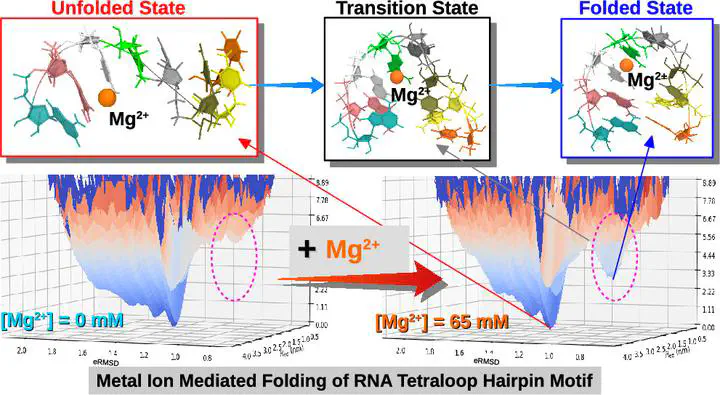 Image credit: A. Halder
Image credit: A. Halder
Abstract
RNA molecules selectively bind to specific metal ions to populate their functional active states, making it important to understand their source of ion selectivity. In large RNA systems, metal ions interact with the RNA at multiple locations, making it difficult to decipher the precise role of ions in folding. To overcome this complexity, we studied the role of different metal ions (Mg2+, Ca2+, and K+) in the folding of a small RNA hairpin motif (5′-ucCAAAga-3′) using unbiased all-atom molecular dynamics simulations. The advantage of studying this system is that it requires specific binding of a single metal ion to fold to its native state. We find that even for this small RNA, the folding free energy surface (FES) is multidimensional as different metal ions present in the solution can simultaneously facilitate folding. The FES shows that specific binding of a metal ion is indispensable for its folding. We further show that in addition to the negatively charged phosphate groups, the spatial organization of electronegative nucleobase atoms drives the site-specific binding of the metal ions. Even though the binding site cannot discriminate between different metal ions, RNA folds efficiently only in a Mg2+ solution. We show that the rigid network of Mg2+-coordinated water molecules facilitates the formation of important interactions in the transition state. The other metal ions such as K+ and Ca2+ cannot facilitate the formation of such interactions. These results allow us to hypothesize possible metal-sensing mechanisms in large metalloriboswitches and also provide useful insights into the design of appropriate collective variables for studying large RNA molecules using enhanced sampling methods.